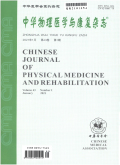10.3760/cma.j.issn.0254-1424.2022.06.107
Targeting optimal time for hyperbaric oxygen therapy following carbon monoxide poisoning for prevention of delayed neuropsychiatric sequelae: A retrospective study
Objectives:Delayed neuropsychiatric sequelae (DNS) are serious complications of carbon monoxide poisoning; neuropsychiatric disorders can occur within a few days of recovery from acute poisoning. Hyperbaric oxygen therapy (HBOT) has been the main treatment of carbon monoxide (CO) poisoning and was recommended as the treatment choice for CO poisoning by the American Undersea and Hyperbaric Medical Society and the Tenth European Consensus Conference on Hyperbaric Medicine of the European Underwater and Baromedical Society. However, the optimal timing for commencing HBOT in patients with CO poisoning remains unknown. We therefore conducted a retrospective study in an attempt to target the optimal time of HBOT for DNS prevention.Methods:A retrospective review of patient files/medical records was conducted on all patients with CO poisoning admitted to the Emergency Department of Linkou Chang-Gung Memorial Hospital, Taiwan between January 1, 2009 and December 31, 2015. A total of 279 patients who received HBOT were eligible for further DNS detection. DNS was defined as the presence of one of the following neurological, cognitive, or psychological sequelae that were documented in the medical record during hospital stay or outpatient clinic follow-up for at least 6 months. A multivariable logistic regression analysis was employed to identify potential determinants of DNS after receiving HBOT for CO poisoning. A receiver operating characteristic (ROC) curve was used to analyse the influence of duration from CO exposure to HBOT on DNS development.Results:A Glasgow coma score of <9 (odds ratio [OR], 3.20; 95% confidence interval [CI], 1.19-8.60) and a longer duration from CO exposure to HBOT (OR, 1.06; 95% CI, 1.03-1.09) were associated with a higher risk of DNS. By contrast, the presence of multiple victims from the same incident was associated with a lower risk of DNS. The ROC curve for the duration between CO exposure and HBOT in predicting DNS development demonstrated an area under the curve of 0.638 (95% CI, 0.575-0.698). The optimal cut-off point according to the Youden index was 22.5 h, with a sensitivity of 41.7% and a specificity of 85.9%. We also stratified the duration from CO exposure to HBOT into 5 intervals (< 6 h, 6-11 h, 12-23 h, 24-47 h and ≥ 48 h) and revealed a trend of increasing DNS risk with time.Conclusion:We identified several potential predictors of DNS in patients with CO poisoning who received HBOT. Multivariable logistic regressions further revealed that longer duration from CO exposure to HBOT, loss of consciousness, and the presence of multiple victims were independent predictors of DNS development. HBOT should be performed as early as possible and preferably within 22.5 h after CO poisoning.
44
2023-05-30(万方平台首次上网日期,不代表论文的发表时间)
共1页
567




